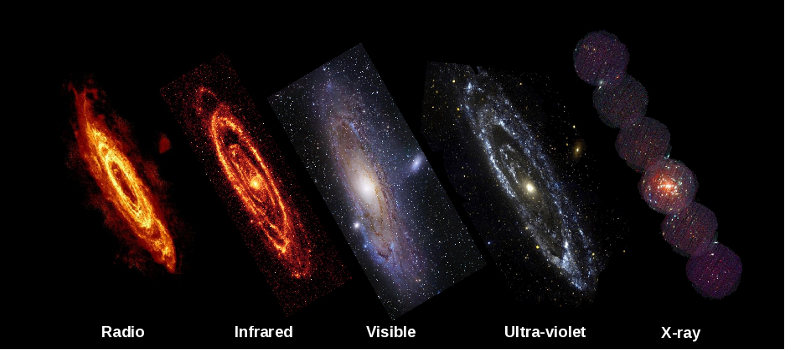Section 5.5.1: How does Gaia work?
Gaia
Gaia, launched at the end of 2013, is a mission to map the Galaxy using the largest camera ever flown in space – its tagline is ``a billion stars in a billion pixel’’. More specifically, it will create an extremely accurate 3D map of around one billion stars and carry out spectroscopic observations of around 150 million stars.
ACTIVITY: The following video describes Gaia in a 'nutshell'.
Gaia in a nutshellVideo player: Whats%20the%20big%20deal%20about%20Gaia_.mp4(credit: IoA, Cambridge)
Gaia will measure the accurate positions of stars, so giving their 2-dimensional location on the sky. However, the key measurement that Gaia will make is the parallax of a billion stars, from which their distances can be precisely calculated. Parallax is the difference in apparent position of an object viewed along two different lines of sight. This enables astronomers to pin-point their 3-dimensional location in space. The precision of these angular measurements is equivalent to resolving the size of a golf ball on the Moon, from Earth – that’s one part in twenty billion.
As well as determining the 3D position of stars, Gaia will also measure their 3D movement through space. This will be partly done using a spectrometer that enables the Doppler shifts of stars to be measured, in order to work out their speed of motion either towards or away from the Earth (Doppler shift was discussed in section 3.2).
ACTIVITY: The following video is the official summary of the mission from the European Space Agency, ESA and also describes the novel camera system that the spacecraft carries.
Gaia operationsVideo player: gaia-operation.mp4(credit: ESA)
The data volume returned by Gaia is also staggering. The satellite will return 60 gigabytes or 600 million images per day. That amounts to 100 terabytes of data during the five-year mission, or more than one trillion images. By the end of the mission, when all the data has been processed, it’s estimated that the data archive will contain 1 petabyte (a million gigabytes) of data.
ACTIVITY: The main science to come out of Gaia will be a Galactic census. To learn more watch the short video below.
Taking a Galactic censusVideo player: Taking%20a%20Galactic%20Census%20-%2060%20Second%20Adventures%20in%20Astronomy%20%2813_14%29.mp4(credit: STFC / OU)
However, Gaia will do other science too. It will be great for all kinds of time-domain astrophysics. One is detecting variable and transient astronomical objects across the whole sky, such as novae and supernovae. Another is finding many exoplanets from the wobbles they impart on the stars they’re orbiting around.
ACTIVITY: As mentioned in section 2.4, it is possible for objects in space to crash into earth. The following video describes how Gaia will also likely spot many near-Earth asteroids, or potential world ending collisions.
Killer asteroidsVideo player: Gaia%20and%20the%20Killer%20Asteroids%20-%2060%20Second%20Adventures%20in%20Astronomy%20%2814_14%29.mp4(credit: STFC /OU)

